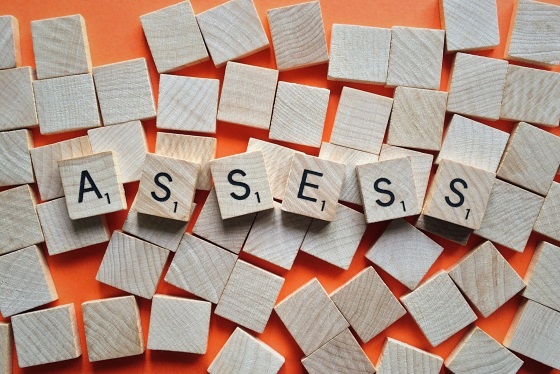mobvet
Ways to encourage the reflection
E-reflection helps students absorb and assimilate the information more effectively. It also allows them to put their newfound knowledge into a real-world context.

-
Online Group Collaboration Projects
The students are divided into groups and assigned a real-world problem or task. Then, let the knowledge sharing begin! Online group collaboration projects also help students see the subject matter from different viewpoints. They can discover new ways to approach challenges, which prompts them to reflect on their own personal cognition.
-
Post -Thought-Provoking Questions
Sometimes, just a careful e-Learning question may trigger self-reflection. Students may think that they know everything about the topic, but a “line” could reveal otherwise. The posted questions to social media page, e-Learning forum, or blog may encourage students to reflect. This process also helps them link the subject with the real-world applications.
-
Encouraging students to assessment and feedback – Generate e- Blogs

The e-Learning blogs generated by students are a great way to get students actively involved and reflect on a topic. They aren’t limited by character counts, so they can explore every idea or concept.
When learners assess their own or others´ work, they tend to become constructively critical about the processes of the work and the assessment of it. They learn from and about the experience of learning (Boud, Keogh, & Walker, 1985). Assessment from the peers can come from different settings, for example, peers can give feedback in physical group reflection (members of the group share their reflection with others and give feedback) or online (Facebook groups, e-blogs etc.). Peers, who are curious about the topic can visit the site and add their own insights. As a result, students can improve their own understanding and gain a fresh perspective.
In this video a student shares learning experience from reflection in group: https://youtu.be/r8ZxLkfgADw
-
Using Mind Maps
Mind maps start with a word, problem, or image in the middle of the screen. The students separate different directions to uncover new ideas or solutions through a unique and innovative way to overcome a common challenge. Mind maps are a great brainstorming tools to allow students to reflect on different facets of the subject matter. They can be able to access the tasks or sub-topics associated with the core idea. This even has the potential to springboard into a group brainstorming session, with the help of online collaboration tools. For example, students can create their own mind maps and discuss them with their peers using Mindmeister or Mindmapping.
-
Including Self-Assessments

e-Learning assessments give a good indication of how students are progressing and what still needs to work on. However, self-assessments can draw attention to personal areas for improvement so one can seek out online resources on their own. The self-assessment serves another important purpose, which is to reflect on the topic just learned and to assimilate the information. The caveat is that they must provide feedback immediately. For example, a student answers a question incorrectly. The system highlights the error, provides the correct response, and then offers supplemental online resources.
-
Summarizing e-Learning experience
The first step requires students to summarize the e-Learning content in their own words. This helps them absorb the key takeaways and improve their comprehension.
The second step is to encourage students to reflect on the e-Learning experience as a whole. For instance, how they felt about the e-Learning content, if they connected with the topic or understood the real-world applications. This allows them to bring emotions into the mix, which improves knowledge retention and recall. It also makes the eLearning experience more relevant and relatable so that it resonates with them on a personal level.
-
Incorporate Real-World – eLearning Activities
 Real-world e-Learning activities emphasize the practical uses of the knowledge and skills acquired. These e-Learning activities put them in realistic situations and it is possible to analyze their response. For instance, how they react to different situations or handle conflicts. As a result, they are able to reflect on the topic while they put their skills into action. Some examples of real-world e-Learning activities that facilitate student’s reflection:
Real-world e-Learning activities emphasize the practical uses of the knowledge and skills acquired. These e-Learning activities put them in realistic situations and it is possible to analyze their response. For instance, how they react to different situations or handle conflicts. As a result, they are able to reflect on the topic while they put their skills into action. Some examples of real-world e-Learning activities that facilitate student’s reflection:
-
Branching scenarios that allow students to evaluate their thought-process and decision-making abilities
-
Interactive simulations that help them improve task proficiency or reevaluate their current strategy
-
Serious games offer the ideal blend of entertainment and e-Learning content analysis. It is possible to gamify the e-Learning content by adding game mechanics, such as e-Learning badges and rewards that stimulate the student’s motivation.
-
Encouraging students to challenge their own assumptions
It’s a good idea to reevaluate assumptions from time to time. It allows identifying opinions that may hinder progress, as well as evaluate past e-Learning experiences that have shaped your current knowledge base. Encouraging students to challenge their own assumptions can be facilitated by e-Learning content design. Following e-Learning activities with specific questions, or asking how to use the information in new and creative ways. Examining the opinions to see if there are any obstacles to overcome. One of the best ways to promote students reflection is to cultivate an effective learning culture.


